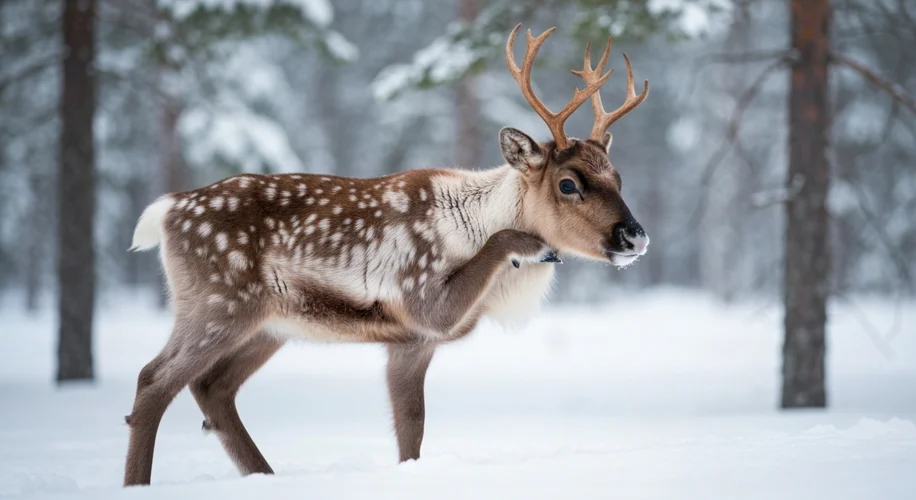Have you ever seen a video of a young reindeer, a calf, appearing to ‘craft’ its developing antlers? Maybe you’ve heard about it from someone with Sami heritage, who might describe how these animals tap and rub their growing antlers with their hind legs. It sounds a bit unusual, right? But there’s some fascinating science behind this behavior.
It turns out this isn’t just a quirky reindeer habit. While the specific way reindeer do it might be unique, the underlying reasons – stimulating growth and potentially spreading scent – are seen in other deer species too.
Why the Tapping and Rubbing?
Antlers are pretty amazing. They’re one of the few types of mammalian appendages that can regenerate completely each year. During this growth phase, antlers are covered in a soft, furry skin called ‘velvet.’ This velvet is packed with blood vessels that supply nutrients to the bone tissue as it grows.
Some researchers believe that the tapping and rubbing actions by young deer, like reindeer calves, help stimulate blood flow to the velvet. Think of it like giving a gentle massage to encourage growth and development. It’s a way for them to actively participate in the growth process.
A Scent-sational Connection?
Another theory, also observed in other deer species, is that this behavior might be related to scent glands. Deer have scent glands in various parts of their bodies, including near their eyes and on their legs. By rubbing their antlers on their legs, they could be transferring scent from these glands onto the antlers. These scented antlers then become a way for the deer to communicate with each other. Imagine it like a deer ‘marking its territory’ or signaling its presence and readiness to other deer, especially during mating seasons.
Do Other Deer Do This?
While direct observations of calves specifically ‘crafting’ antlers with their legs might be more commonly discussed with reindeer, the principles apply more broadly. Adult deer, for instance, are well-known for ‘rubbing’ their antlers once the velvet has shed. They do this on trees and bushes to remove the velvet, sharpen their antlers, and also to deposit their own scent, acting as a territorial marker. This rubbing behavior in adults is a critical part of antler maintenance and social signaling.
So, while the calf’s actions might seem like a unique form of antler grooming, it’s likely an early expression of the same drives that lead adult deer to rub their antlers. It’s all about healthy growth and communication within the deer family.
It’s a wonderful example of how animal behavior, even something as seemingly peculiar as a calf tapping its head with its leg, is often rooted in essential biological functions. Nature is always finding clever ways to get things done!

